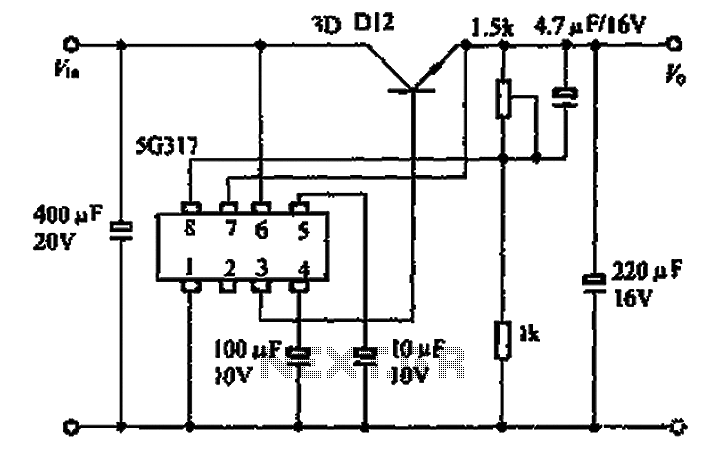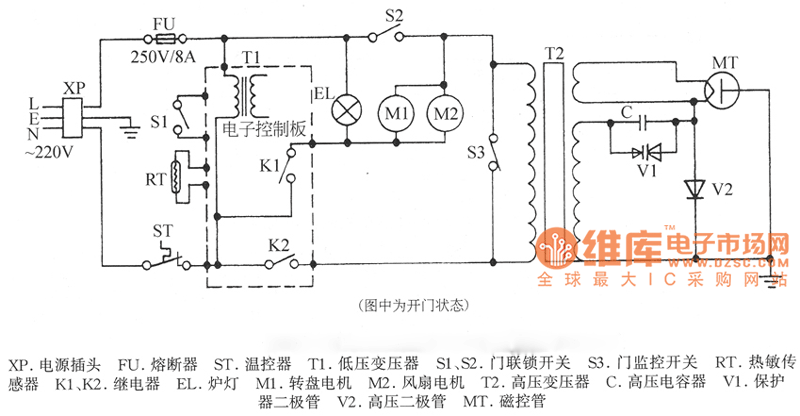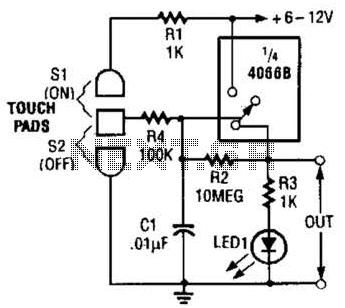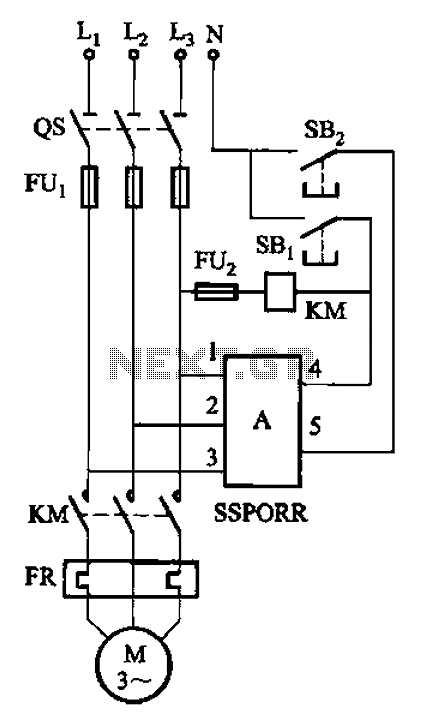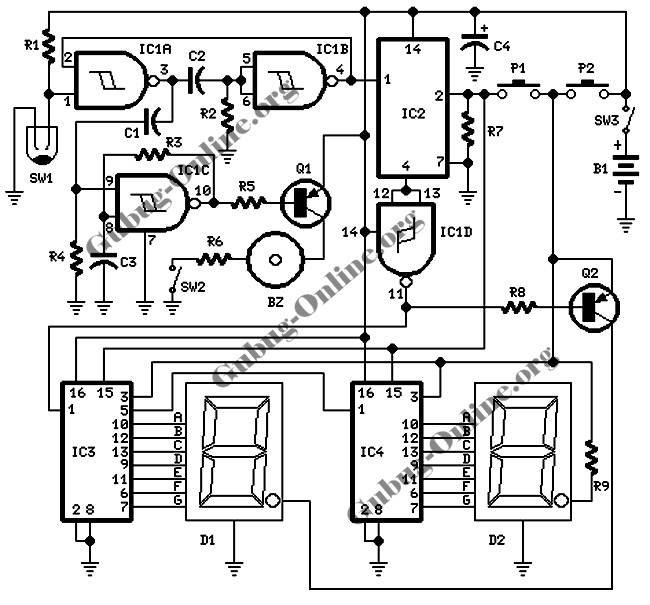
5V From 4Aa Cells Circuit
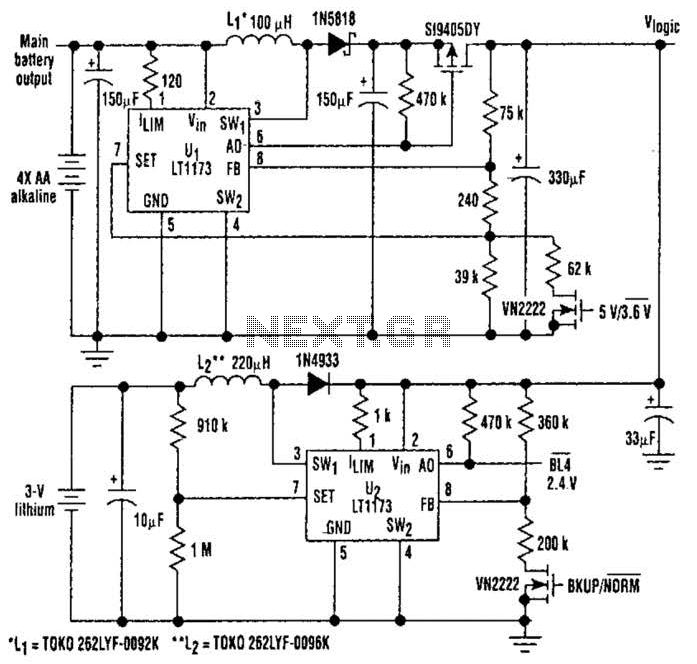
This unique logic-power-converter design allows for a switchable output of 3.6 V or 5 V at 200 mA using four AA cells. The supply features a MOSFET switch that can connect to a lithium backup battery, providing a 3.4 V output when the main battery is depleted or removed. The circuit consumes only 380 µA under no-load conditions and operates as a step-up/step-down converter. When the cells are fresh, with a voltage ranging from approximately 6 V to 5.2 V, the LT1173’s gain block drives the p-channel MOSFET, converting the circuit into a linear voltage regulator. Although this may appear inefficient, the batteries quickly decrease from 6 V to 5 V. With a 5 V input, the efficiency for the 3.6 V output is 72%. As the battery pack voltage declines, efficiency improves, exceeding 90% at a 4.2 V input. Below a 4 V input, the circuit switches to step-up mode, maximizing battery energy utilization. Efficiency ranges from 83% at about a 4 V input to 73% at a 2.5 V input. The supply can deliver 200 mA across its entire operational range, and in linear mode, it avoids current spikes that could diminish battery life due to the relatively high internal resistance of alkaline cells. This topology provides over 9.3 hours of 3.6 V at 200 mA output power, in contrast to just 7 hours with traditional flyback topology used in other designs.
The described circuit employs a combination of a boost and buck converter topology to achieve efficient voltage regulation across a range of input voltages. The core component, the LT1173, operates effectively within the specified voltage ranges, allowing for seamless transitions between linear regulation and switching modes. The utilization of a p-channel MOSFET as the primary switching element contributes to the circuit's ability to handle varying load conditions while maintaining stability and efficiency.
The design incorporates a feedback loop that monitors the output voltage, ensuring the output remains stable regardless of fluctuations in input voltage or load current. This feedback mechanism is crucial for maintaining the desired output voltage levels, particularly when transitioning between the linear and step-up modes. The use of four AA cells provides a sufficient energy source, while the option to switch to a lithium backup battery ensures continuous operation even when the primary power source is depleted.
The circuit's low quiescent current of 380 µA under no-load conditions is a significant advantage, as it prolongs battery life by minimizing energy consumption during idle periods. The careful selection of components, including the MOSFET and the LT1173, allows the circuit to operate efficiently across a wide range of conditions, making it suitable for applications requiring reliable power supply with minimal energy waste.
In summary, this logic-power-converter design showcases advanced features that enhance efficiency and extend battery life while providing a stable output voltage. Its ability to adapt to varying input conditions and load requirements makes it an effective solution for portable electronic devices that rely on battery power. With this unique logic-power-converter design (see the figure), a switchable 3.6 or 5 V at 200 inA can be attained by using four AA cells. The supply incorporates a MOSFET switch that can switch to a lithium backup battery, providing a 3.4-V output when the main battery is dead or removed.
The supply consumes only 380 under no-load conditions. The circuit operates in a somewhat novel mode as a step-up/step-down converter. Whenlhe cells are fresh (from about 6 V to about 5.2 V), the LT1173`s gain block drives the p-channel MOSFET, which turns the circuit into a linear voltage regulator. This might seem inefficient, but the batteries are quick to drop from 6 V to 5 V. With a 5-V input, the efficiency (for the 3.6-V output) is 3.6/5 or 72%, which is reasonable. As the battery-pack drops in voltage, efficiency increases, reaching greater than 90% with a 4.2-V input. At a point below a 4-V input, the circuit, switches to step-up mode. This mode squeezes the batteries for all of their available energy. In this case, efficiency runs between 83% at approximately a 4-V input to 73% at a 2.5-V input. The supply can deliver 200 mA over its entire operational range. In its linear mode of operation, the supply has no current spikes that, because of the fairly high internal resistance of the alkaline cells, can reduce battery life.
The topology delivers over 9.3 hours of 3.6-V 200-mA output power, compared to just 7 hours using the traditional flyback topology that is used in other designs. 🔗 External reference
The described circuit employs a combination of a boost and buck converter topology to achieve efficient voltage regulation across a range of input voltages. The core component, the LT1173, operates effectively within the specified voltage ranges, allowing for seamless transitions between linear regulation and switching modes. The utilization of a p-channel MOSFET as the primary switching element contributes to the circuit's ability to handle varying load conditions while maintaining stability and efficiency.
The design incorporates a feedback loop that monitors the output voltage, ensuring the output remains stable regardless of fluctuations in input voltage or load current. This feedback mechanism is crucial for maintaining the desired output voltage levels, particularly when transitioning between the linear and step-up modes. The use of four AA cells provides a sufficient energy source, while the option to switch to a lithium backup battery ensures continuous operation even when the primary power source is depleted.
The circuit's low quiescent current of 380 µA under no-load conditions is a significant advantage, as it prolongs battery life by minimizing energy consumption during idle periods. The careful selection of components, including the MOSFET and the LT1173, allows the circuit to operate efficiently across a wide range of conditions, making it suitable for applications requiring reliable power supply with minimal energy waste.
In summary, this logic-power-converter design showcases advanced features that enhance efficiency and extend battery life while providing a stable output voltage. Its ability to adapt to varying input conditions and load requirements makes it an effective solution for portable electronic devices that rely on battery power. With this unique logic-power-converter design (see the figure), a switchable 3.6 or 5 V at 200 inA can be attained by using four AA cells. The supply incorporates a MOSFET switch that can switch to a lithium backup battery, providing a 3.4-V output when the main battery is dead or removed.
The supply consumes only 380 under no-load conditions. The circuit operates in a somewhat novel mode as a step-up/step-down converter. Whenlhe cells are fresh (from about 6 V to about 5.2 V), the LT1173`s gain block drives the p-channel MOSFET, which turns the circuit into a linear voltage regulator. This might seem inefficient, but the batteries are quick to drop from 6 V to 5 V. With a 5-V input, the efficiency (for the 3.6-V output) is 3.6/5 or 72%, which is reasonable. As the battery-pack drops in voltage, efficiency increases, reaching greater than 90% with a 4.2-V input. At a point below a 4-V input, the circuit, switches to step-up mode. This mode squeezes the batteries for all of their available energy. In this case, efficiency runs between 83% at approximately a 4-V input to 73% at a 2.5-V input. The supply can deliver 200 mA over its entire operational range. In its linear mode of operation, the supply has no current spikes that, because of the fairly high internal resistance of the alkaline cells, can reduce battery life.
The topology delivers over 9.3 hours of 3.6-V 200-mA output power, compared to just 7 hours using the traditional flyback topology that is used in other designs. 🔗 External reference

